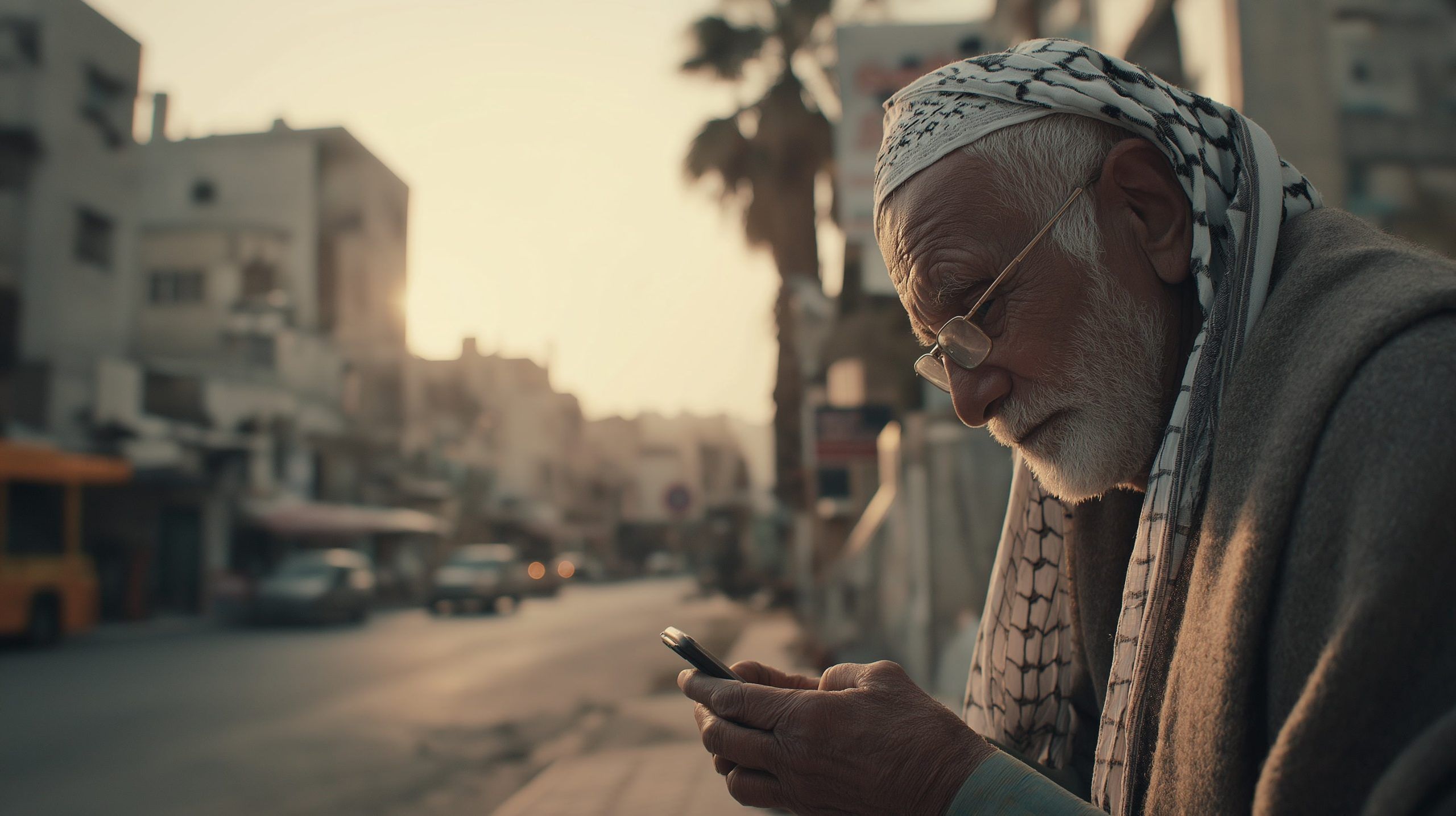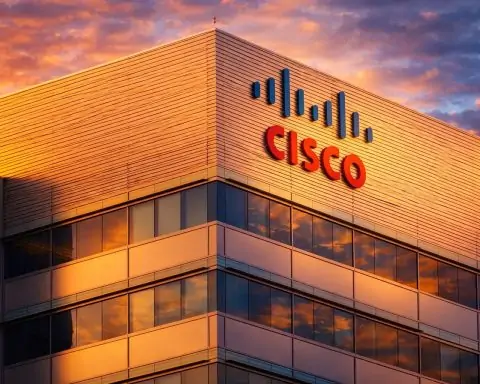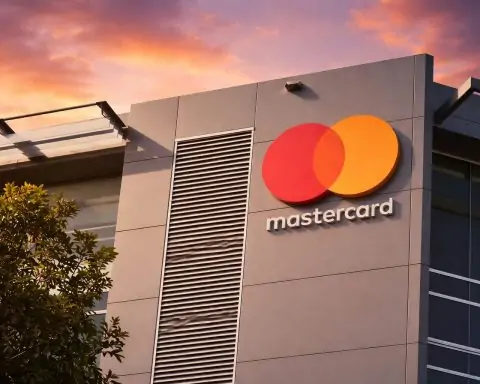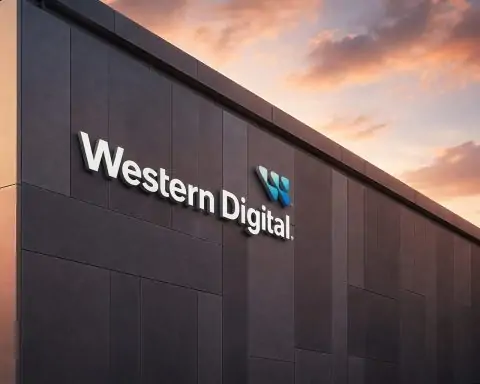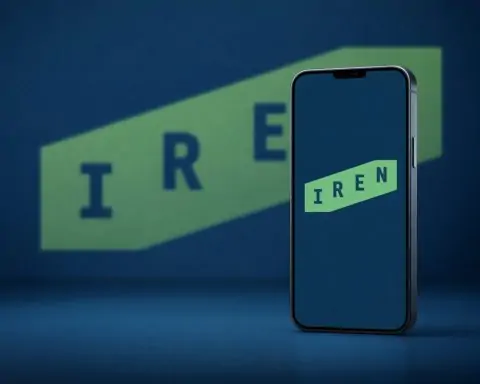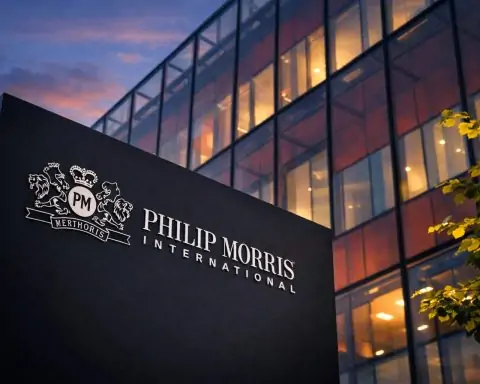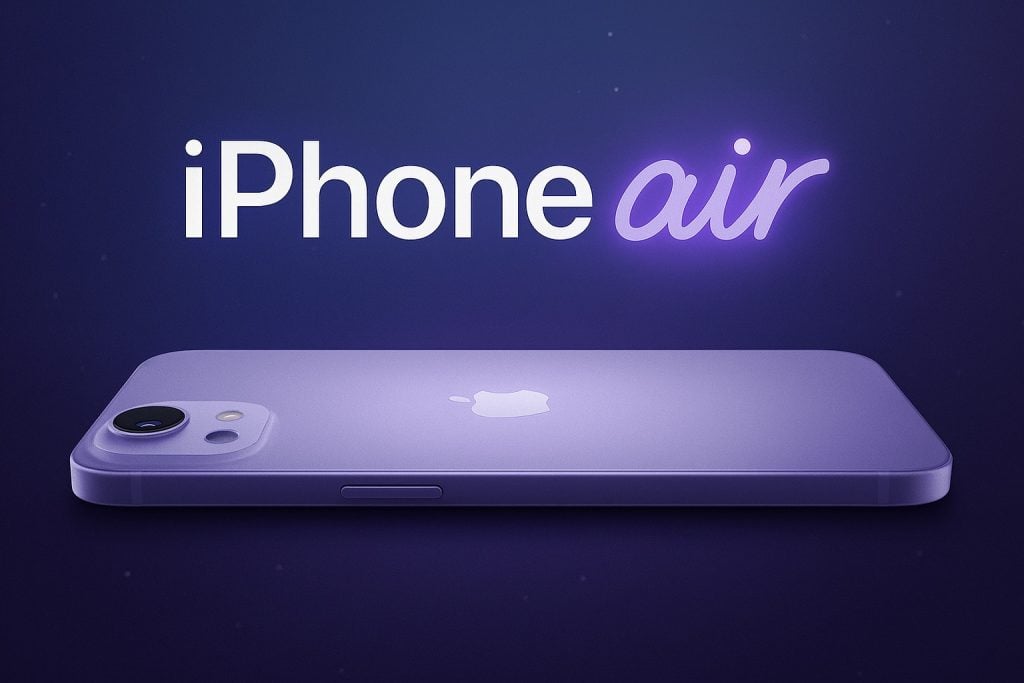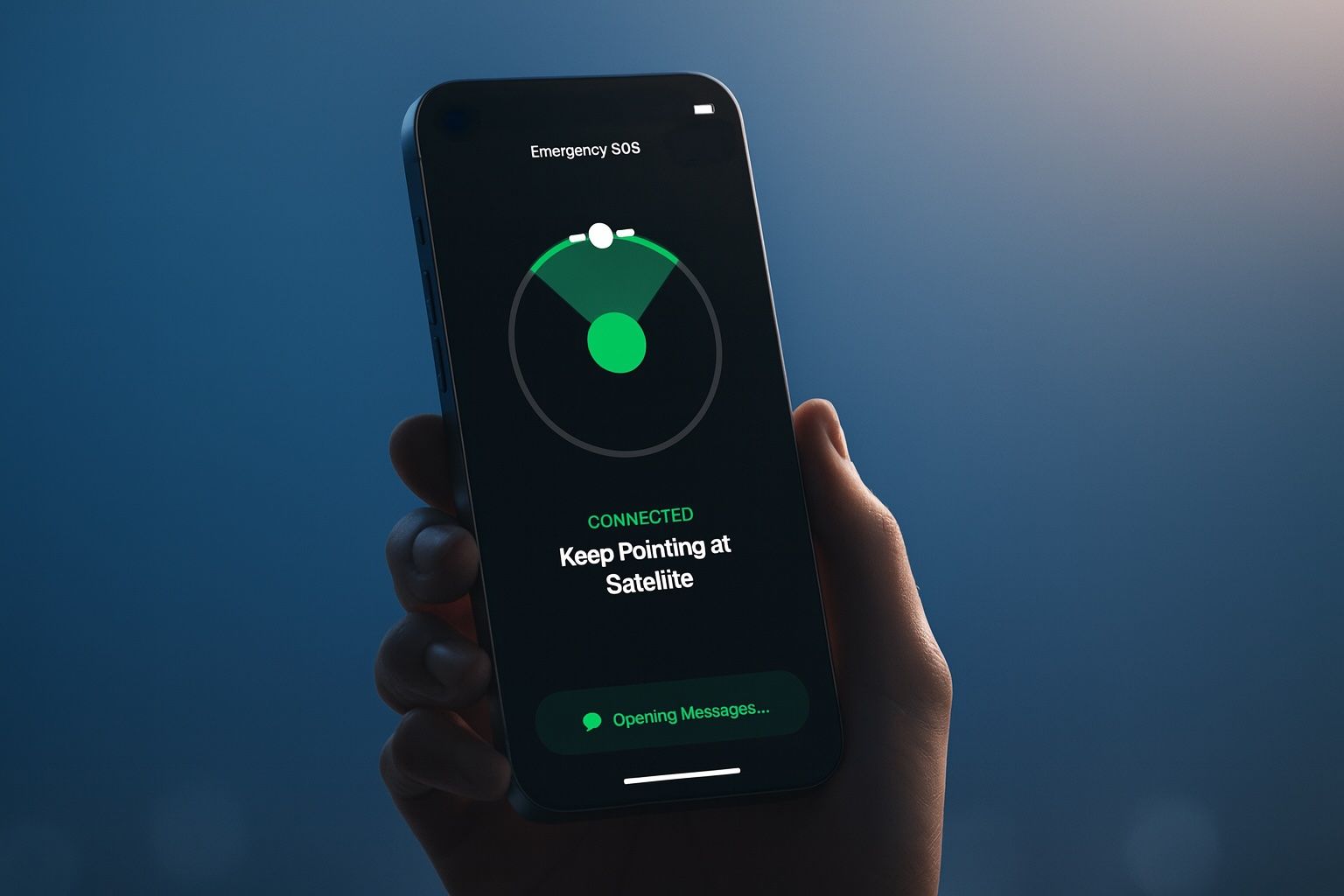- By the end of 2022, Palestine had about 457,700 fixed landlines in service, up 27% since 2010.
- By 2022, ADSL broadband subscriptions reached roughly 358,000, up 201% since 2010.
- By the end of 2022, fiber-to-the-home (FTTH) connected over 51,700 subscribers.
- All Palestinian international internet traffic runs through Israeli-controlled infrastructure with no independent undersea cables.
- 3G was rolled out in the West Bank in 2018, while Gaza remained on 2G.
- 4G was approved for Palestinian networks in early 2023.
- As of 2025, Palestinians have no access to 5G spectrum.
- Jawwal, launched in 1999, has around 3 million mobile subscribers.
- Ooredoo Palestine, formerly Wataniya Mobile, entered the market in 2009 and now serves about 1.5 million mobile customers.
- Nine ISPs are licensed (seven broadband, one fiber, one wholesale bitstream), with Paltel Group dominating fixed broadband and mobile, and over 100 local Wi‑Fi networks licensed.
Palestine – encompassing the West Bank and Gaza Strip – has made strides in expanding internet access, but it lags behind global and regional standards due to unique political and infrastructural challenges [1]. Decades of Israeli occupation and the terms of the Oslo Accords have constrained the development of telecommunications, limiting spectrum access and hindering the introduction of modern technologies [2]. Despite these hurdles, Palestinians increasingly rely on the internet for daily life, and efforts are underway to improve connectivity across the West Bank and Gaza.
Infrastructure Development (Fixed-Line, Broadband, Mobile, Fiber)
Palestine’s communications infrastructure is a mix of fixed-line networks, mobile networks, and emerging fiber-optic systems. Fixed-line telephony and broadband have steadily grown: by the end of 2022 there were about 457,700 landlines in service (home, business, and government lines) [3]. This reflects a 27% increase since 2010, aided by infrastructure investments by the dominant operator Paltel. Traditional ADSL broadband over copper lines has expanded to roughly 358,000 subscribers by 2022 (up 201% since 2010) [4]. Notably, 2022 marked a turning point as fiber-optic broadband (FTTH) began rolling out widely – over 51,700 fiber subscribers were connected by end of 2022 [5]. The launch of fiber-to-the-home services enabled higher speeds and even led to a slight decline in old copper-line subscriptions as users migrated to fiber [6] [7]. International connectivity, however, remains vulnerable – all Palestinian international internet links run through Israeli-controlled infrastructure (there are no independent undersea cables for Gaza/West Bank), meaning Israel controls routing of traffic abroad [8]. This dependence on land cables through Israel makes Palestinian networks susceptible to outages if those links are cut or power is lost in the Israeli grid [9] [10].
In the mobile sector, Palestine only relatively recently obtained access to mobile broadband technologies. Under Israeli-imposed spectrum restrictions, Palestinian operators were limited to 2G (GSM) service for many years. It was not until 2018 that 3G was finally rolled out in the West Bank [11] after protracted negotiations; even then, Gaza remained on 2G only [12]. As a result, mobile internet in Gaza has been effectively non-existent or extremely slow, with maximum data speeds of ~9.6 kbps on 2G networks [13] – essentially unusable for modern data needs. The West Bank’s 3G network greatly improved mobile data availability there starting in 2018 [14], but still lags far behind the 4G and 5G networks of neighboring countries. Fourth-generation (4G) service was only approved for Palestinian networks in early 2023 [15], following U.S. diplomatic pressure. Plans were announced to roll out 4G in both West Bank and Gaza by late 2023, with Israeli-Palestinian technical teams conducting surveys to enable this upgrade [16]. As of mid-2025, the West Bank is moving toward launching 4G, though the Gaza Strip’s upgrade remains uncertain due to the ongoing blockade and political conditions. Meanwhile, Israeli carriers have offered 4G/5G coverage across the region for years (including in Israeli settlements in the West Bank), underscoring the technology gap Palestinians face [17].
Mobile network coverage in Palestinian areas is strong for basic voice/SMS (2G) services – nearly all populated areas have some signal – but coverage for high-speed data is limited by the restrictions on tower placement and spectrum. Israeli authorities often restrict Palestinian cell towers, especially in Area C of the West Bank, leading to coverage gaps that are partially filled by signals from Israeli operators’ towers [18]. All told, Palestine has about 4.4 million active mobile subscriptions as of 2022 [19] (a number that exceeds the population, indicating many carry multiple SIMs or devices). Two mobile operators serve these subscribers: Jawwal (a subsidiary of Paltel Group) and Ooredoo Palestine. Jawwal – launched in 1999 – is the largest provider, with over 3 million customers on its GSM/3G network [20]. Ooredoo (formerly Wataniya Mobile) entered the market in 2009 and now has about 1.5 million customers [21], providing competition in the mobile space. Both operate in the West Bank and Gaza, though their services in Gaza are still constrained to 2G. The lack of locally provided 4G has led many data-hungry users (especially businesses or those near Israeli coverage) to resort to using Israeli SIM cards and roaming on Israeli networks for faster mobile internet [22] – a workaround that undermines Palestinian operators’ revenue but provides individuals better service.
Overall, internet backbones and infrastructure have improved in recent years: fiber backbones link major cities, and local ISPs distribute connectivity via DSL, fiber, and wireless Wi-Fi networks. The Palestinian Ministry of Telecom & IT has licensed 9 internet providers (7 for broadband services, 1 specialized in fiber networks, and 1 operating on a wholesale bitstream access model) [23]. In addition, over 100 local wireless (Wi-Fi) networks are licensed, often used to extend connectivity in dense neighborhoods or rural areas [24]. However, the entire system is constrained by Israeli control of imports (telecom equipment is often classified as “dual-use” and subject to Israeli approval) [25] and by the need for Israel’s permission for any new spectrum (e.g. for 4G/5G or for installing microwave links). These factors have kept Palestinian infrastructure one or two generations behind the global state-of-the-art [26].
Availability and Affordability of Internet Services
Despite the infrastructure challenges, internet access is widely available to the Palestinian population. Surveys in 2022 showed that about 92% of households in Palestine have some form of internet service at home (93% in the West Bank, 92% in Gaza) [27]. This high household access rate includes any internet connection (whether a home fixed broadband line, a shared Wi-Fi, or mobile data usage by household members). Likewise, individual usage is very high – around 89% of Palestinians (age 10+) used the internet in 2022 [28]. For comparison, this usage rate (nearly nine in ten people) is well above the regional average (about 62% in Asia) [29], indicating that when basic connectivity is present, Palestinians eagerly integrate the internet into daily life for communication, information, and services.
However, there is a digital divide within Palestine in terms of quality and device access. In the West Bank, about 83% of individuals own a smartphone, whereas in the Gaza Strip smartphone ownership is around 58% [30]. Many Gaza residents still use basic mobile phones due to economic constraints and the limited utility of smartphones on 2G networks. Overall, 73% of Palestinians (10+ years old) owned smartphones as of 2022 [31], and about 79% owned some type of mobile phone [32]. The gap between West Bank and Gaza highlights the impact of poverty and infrastructure: Gaza’s lower incomes and weaker networks mean fewer can justify or afford internet-capable devices. Additionally, while home internet is prevalent, the speed and reliability of that access differs (as discussed in the performance section).
In terms of affordability, basic internet service pricing in Palestine is relatively reasonable by international standards, though not trivial for low-income families. According to Internet Society analyses, the cost of a standard mobile data package (meeting a basic low-consumption threshold) is about 1.15% of average gross national income per capita [33]. This implies that Palestine meets the UN Broadband Commission’s affordability target (which is 2% of monthly income for an entry-level broadband package). For example, an unlimited home broadband line (around 60 Mbps via ADSL or fiber) costs roughly 156 Israeli shekels per month (≈ $45) in 2023 [34]. Mobile data bundles are available at various prices; for instance, ~3 GB for 30 days costs around $19.5 via eSIM providers [35]. These prices are comparable to neighboring countries in absolute terms and, given Palestine’s upper-middle-income classification [36], put connectivity within reach of most middle-class households. That said, affordability can still be a hurdle for poorer families, especially in Gaza where poverty rates are high. Many lower-income Palestinians limit their usage to slower (cheaper) plans or use public Wi-Fi spots (common in cafes, universities, and community centers) [37]. The fact that 92% of households have internet suggests that families prioritize connectivity and often share connections or use mobile data intermittently to manage costs.
Notably, a significant number of Palestinians (especially in border areas of the West Bank) use alternative methods to access affordable internet, including Israeli SIM cards or signals. Israeli mobile plans sometimes offer better value for money with fast 4G speeds; although it’s technically unauthorized for Palestinians to use Israeli telecom services, the practice is widespread in some areas to save cost or gain performance [38]. This gray-market connectivity further indicates that, while basic internet is “available” to virtually all, the quality and price of the officially available services drive some to seek other options. Improving the competitiveness and offerings of Palestinian ISPs and mobile operators – for example by introducing 4G and more ISP competition – is expected to enhance affordability and value for consumers in the coming years.
Key Internet Service Providers and Market Structure
Palestine’s telecom market is relatively concentrated, dominated by a few key players under the oversight of the Palestinian Authority. The Paltel Group (Palestine Telecommunications Company) is the largest actor, operating across multiple segments [39]. Paltel Group’s subsidiaries include: Paltel (the fixed-line telephony and broadband provider), Hadara (its internet service provider arm), and Jawwal (its mobile network operator). Paltel (fixed) has built most of the telecom infrastructure and had over 400,000 landline subscribers as of 2020 [40]. Hadara and other Paltel ISPs provide ADSL and fiber internet to the majority of homes and businesses. Jawwal, launched in 1999 as the first Palestinian mobile operator, is the market leader in mobile with around 3 million subscribers on its 2G/3G networks [41]. Jawwal enjoys a strong brand and coverage, partly due to its head start and Paltel’s infrastructure support.
The second mobile provider is Ooredoo Palestine (formerly Wataniya Mobile). Backed by the Qatari Ooredoo Group, it entered the West Bank market in 2009 and later expanded to Gaza in 2018 [42]. Ooredoo now serves about 1.5 million mobile customers [43], giving it roughly one-third of the mobile market (with Jawwal holding about two-thirds). The introduction of competition via Ooredoo had a positive effect on pricing and service options, though both companies have been held back by the same spectrum limitations. Notably, both Jawwal and Ooredoo are required to route their international traffic through Israeli operators and cannot install certain infrastructure without Israeli permits, which means competition is somewhat constrained by external factors [44].
For internet services (ISP) and fixed broadband, Paltel’s dominance is also pronounced. Paltel’s own ISP arm and affiliates (such as Hadara) account for the bulk of ADSL/fiber subscriptions. There are, however, several independent ISPs licensed. In total, nine ISPs operate in Palestine [45]. These include companies like CoolNet, Mada, Reach, Sky, and others, some of which resell Paltel’s bandwidth under a Bitstream Access model [46]. One company has a specific license to build/operate fiber networks (this may refer to initiatives by local utility companies or specialized fiber ventures) [47]. Despite this diversity on paper, the effective competition in the ISP market is limited. The Internet Society’s assessment rates Palestine’s choice of internet service providers as “very poor,” indicating low competition and heavy market concentration [48]. In practice, most smaller ISPs rely on Paltel’s infrastructure or international gateway, making the Paltel Group a de facto monopoly in wholesale terms. This can impact prices and innovation, though the government has been pushing for more competition and regulatory oversight to prevent abuse of dominance.
It’s also important to mention Israeli operators’ presence. Israeli telecom companies (such as Bezeq, Cellcom, Partner/Hot, etc.) are not licensed by the PA but their signals and services do spill into the West Bank. Israeli mobile networks cover settlements and often extend coverage into nearby Palestinian cities. Some Palestinians intentionally use those services (purchasing Israeli SIMs through intermediaries) to get 4G coverage or higher data caps [49]. Israeli fixed-line broadband (like Bezeq’s fiber or cable services) is available in settlements and in East Jerusalem; a few Palestinians in East Jerusalem or areas close to Israeli infrastructure have subscribed to those, though the vast majority in PA-controlled areas use the Palestinian ISPs. This unregulated competition from Israeli companies has siphoned revenue from Palestinian ISPs and is estimated to have caused significant losses. A World Bank report in 2016 calculated that Palestinian mobile operators lost hundreds of millions of dollars in potential revenue (an estimated $436 million to $1.5 billion in 2013-2015) due to Israeli restrictions and unauthorized competition by Israeli operators extending service into Palestinian areas [50]. The absence of 3G (until 2018) alone accounted for an estimated $339–742 million of that lost revenue [51]. This illustrates how market dynamics are skewed by the political situation – Palestinian companies operate at a disadvantage, and the overall sector’s growth and reinvestment capacity have been hampered.
In summary, the ISP/mobile market in Palestine features a duopoly in mobile (Jawwal vs Ooredoo) and an oligopoly in ISP services (with Paltel/Hadara leading and a handful of smaller ISPs in support roles). The Palestinian Authority, via the Ministry of Telecom & IT, regulates licensing and tries to foster competition, but Israeli control over core resources (spectrum, international gateways) means that true open competition is limited. Plans to establish an independent telecom regulator – supported by a World Bank project – aim to improve transparency and market fairness going forward [52].
Internet Performance: Speed, Coverage and Reliability
The overall performance of internet services in Palestine is improving but still falls short of global and neighboring standards. Fixed broadband speeds have risen substantially in recent years, primarily due to fiber deployment. By the end of 2022, the average download speed for fixed internet in Palestine was about 26 Mbps, double what it had been a year earlier (13 Mbps in 2021) [53]. By 2023, with more fiber uptake, median broadband speeds were measured even higher – around 64.5 Mbps download on fixed networks on average [54]. This is a marked improvement, showing that urban customers on new fiber lines can get speeds in the hundreds of Mbps, whereas many remaining ADSL users still have more modest speeds (e.g. 10–20 Mbps). Mobile data speeds, on the other hand, are very slow by modern standards. With only 3G service available in the West Bank and 2G in Gaza, typical mobile download speeds average around 4–5 Mbps or less [55]. In Gaza’s 2G network, speeds are often under 0.1 Mbps (basically unusable for anything beyond messaging). Even in the West Bank’s 3G network, the latency is high and streaming HD video or other high-bandwidth activities is difficult. In contrast, Israeli 4G networks (which some Palestinians access via roaming or Israeli SIMs) provide tens of Mbps. This disparity will persist until Palestinian 4G is operational.
In terms of coverage, nearly 100% of the population is covered by 2G voice service, and the West Bank has extensive 3G coverage in all major towns and along highways since 2018. Gaza has complete 2G coverage for calls/SMS. 3G coverage in Gaza is absent (aside from a few localized Israeli cell signals). Once 4G is launched, the aim is to cover the main population centers first, then expand. It’s worth noting that Israeli forces restrict where Palestinian cell towers can be erected, especially in rural Area C of the West Bank, which has created some dead zones. Often Israeli networks fill these gaps, but that means Palestinians in those areas might only get Israeli signals (and 4G) while their own providers have no coverage rights there [56]. This patchwork coverage undermines the quality of service for Palestinian networks. Still, within Palestinian cities and villages under PA administration, one generally finds a Wi-Fi hotspot or home broadband readily available, even if mobile data is slow.
Reliability and quality of service have been major issues, especially in the Gaza Strip. Gaza’s infrastructure has been described as fragile, with limited redundancy. All of Gaza’s international bandwidth comes through a handful of fiber-optic cables that pass through Israeli territory, and there are no alternate routes (e.g. sea cables or direct links to Egypt) [57] [58]. This makes the entire enclave vulnerable to outages if those cables are cut or powered down. In the West Bank, there are multiple routing points via Israel and perhaps some capacity via Jordan, giving a bit more resilience – the Internet Society rates Palestine’s upstream diversity as “good” (more than two international connections) [59]. Power cuts and fuel shortages also heavily impact reliability, especially in Gaza. The Palestinian telecom providers have installed backup generators, solar panels, and batteries (in fact, Paltel buries backup fiber cables extra deep and equips data centers with multiple power layers in Gaza) [60], but prolonged electricity blackouts still bring down networks. During conflicts, Gaza’s telecom network has experienced total blackouts – for example, on 27 October 2023, Israeli bombardments severed the remaining fiber routes and a complete communications blackout occurred [61]. For about 34 hours, no internet or phone service was available in Gaza, crippling humanitarian operations and isolating the population [62] [63]. Although service was later partially restored, connectivity has since been intermittent when infrastructure is damaged or fuel for generators runs out [64].
Even in peaceful times, network outages occur due to infrastructure limitations. For instance, aging copper lines can be unreliable in some areas, and without 4G, the mobile networks in West Bank became overloaded at times, especially during COVID-19 lockdowns when everyone relied on 3G. The average latency and jitter on Palestinian internet connections are higher than regional averages, affecting real-time applications. According to one ranking, Palestine’s fixed broadband speed (median ~68 Mbps) is lower than Israel’s (~206 Mbps) and also below the global average [65] [66]. Mobile broadband speeds (~5 Mbps median) are an order of magnitude lower than global average mobile speeds (which are ~30–40 Mbps) and far below Israel’s ~43 Mbps median mobile speed [67] [68]. These technical gaps mean that Palestinians often cannot fully utilize modern internet applications – for example, high-definition video streaming, large cloud services, or advanced telepresence are challenging, particularly in Gaza or on mobile connections.
On a positive note, efforts to bolster reliability are ongoing. The Palestinian networks have built redundancy where possible (multiple fiber paths in the West Bank, deep-buried cables and solar backups in Gaza) [69] [70]. Local content delivery is being improved – about 5% of popular content is now cached within Palestine (though this is still far below the 50% target) [71], meaning most traffic still goes out to global servers. There are also two Internet Exchange Points (IXPs) in Palestine (likely one in Ramallah and one in Gaza) to facilitate local traffic exchange [72]. These help improve latency for local services. The Internet resilience score for Palestine is around 34% (medium) [73], reflecting moderate capacity to withstand disruptions but highlighting that political violence (or Israeli intervention) can quickly knock communications offline. In summary, speed and quality are gradually improving (especially via fiber), but reliability remains at risk from power and political disruptions, and mobile internet performance is poor until the long-delayed 4G era begins.
Regulatory and Policy Environment
The regulatory environment in Palestine’s telecom sector is unusual, shaped by layers of Palestinian Authority (PA) laws and Israeli military/Oslo Accords constraints. Under the Oslo Accords (1990s), Israel retained ultimate control over the electromagnetic spectrum in the Palestinian territories. This means Palestinian operators cannot use radio frequencies or import wireless equipment without Israeli approval [74]. In practice, Israel has routinely delayed or denied requests for new frequencies (e.g. 3G, 4G), citing security or other reasons, which has stunted telecom development. For instance, it took until 2018 for Israel to allow 3G for Palestinian networks, years after all neighbors had 3G/4G. Similarly, 4G was only agreed to in 2022/2023 after international pressure [75]. This effectively places Palestinian telecom regulation partially in the hands of the Israeli Ministry of Communications for spectrum matters.
On the Palestinian side, the sector is governed by the Ministry of Telecommunications and Information Technology (MTIT) in Ramallah. The PA has telecom laws and licensing regimes for operators, ISPs, and wireless networks. Paltel’s licenses, Ooredoo’s mobile license, and the ISP licenses are all issued by the PA. The MTIT sets tariffs (to some extent), service obligations, and consumer protection rules. However, the PA lacks an independent regulator analogous to an FCC or Ofcom – the ministry itself doubles as regulator. This is something being addressed: the World Bank and donors are supporting the establishment of an independent Telecom Regulatory Authority to promote competition and transparency [76]. A $20 million World Bank project launched in 2021 aims to help draft modern telecom regulations, set up a regulator, and design frameworks for things like spectrum management and licensing that align with international best practices [77] [78]. Until such an authority is active, regulatory decisions are made by the ministry, which may lack full autonomy (as it’s part of the government structure).
Israeli restrictions pervade many regulatory aspects. For example, any telecommunications equipment categorized as “dual-use” (which includes a broad range of networking gear, antennas, fiber optic cables, encryption tools, etc.) must get Israeli military permission to be imported into the Palestinian territories [79]. This has often led to delays – Palestinian companies report waiting many months for routers, switches, or fiber rolls to be cleared, if at all. Sometimes they receive equipment only through coordination with international organizations or if Israel declassifies certain items. Also, infrastructure deployment in Area C of the West Bank (60% of the territory, under Israeli control) is nearly impossible for Palestinians. This means the PA and Palestinian telcos cannot freely build cell towers or lay fiber in those areas, leading to coverage gaps and reliance on Israeli infrastructure there [80]. Essentially, Israel exercises a veto over critical aspects of telecom development, a situation that Palestinian officials liken to “digital occupation.” Indeed, since 1967, Israel has controlled all connectivity – for decades Palestinians had to use the Israeli postal and communications system, and even today Palestine’s international dialing code +970 is routed via the Israeli network +972 [81].
On the flip side, the Palestinian Authority’s oversight does cover retail service quality, pricing to some extent, and content regulation. The PA has, on occasion, ordered blocks on certain websites or news outlets (not unlike other governments in the region) – there have been cases of the PA censoring or blocking websites critical of its officials [82], and Hamas authorities in Gaza have their own approaches to internet censorship. However, the question of censorship/political content is separate from the access issues, and overall Palestine enjoys a relatively open internet compared to some countries (with vibrant social media usage, etc., albeit under heavy surveillance by Israeli intelligence).
Spectrum allocation and interference is another regulatory challenge. Because Israel and Palestine use overlapping spectrum, Israeli cell towers broadcasting 4G in West Bank settlements have interfered with Palestinian 3G signals. Conversely, when Palestine rolled out 3G, Israeli providers had to adjust some frequencies. Coordination committees (under the Oslo framework) exist to handle this, but they have not met regularly in recent years. The result is that some frequencies optimal for 4G/5G are still not allocated to Palestinians. As of 2025, Palestinians have no access to any 5G spectrum and will be rolling out 4G likely on narrower bands than normally used, due to such constraints.
In summary, the telecom regulatory environment is partially sovereign and partially occupied: the PA can regulate the business and consumer side to a degree, but control over the “airwaves” and supply chain is largely in Israeli hands. This has led to what 7amleh (a Palestinian digital rights group) calls a “discriminatory digital divide” created by Israeli policies [83]. Moving forward, reforms like an independent regulator and updated telecom laws (the current law dates to 1996, with amendments) are expected to improve the domestic governance of the sector. But the overarching limitation – Israeli permission – remains a key factor. Palestinian officials and international stakeholders continue to advocate for the lifting of these restrictions, arguing that communications development is a right and also an economic necessity. Some recent positive steps include Israel’s agreement (under U.S. pressure) to allow 4G, and talks about direct connection points for undersea cables (e.g. possibly linking Gaza to a fiber link in Egypt, which if realized could reduce sole dependence on Israeli infrastructure). Until such changes occur, the regulatory landscape will remain a complex mix of Palestinian and Israeli control.
Social and Economic Impact of Connectivity
The expansion (and conversely, the limitations) of internet access in Palestine has had profound social and economic implications. On the social front, the internet serves as a lifeline for Palestinians to connect with each other and the outside world, especially given the physical movement restrictions many face. In Gaza, under blockade for over 17 years, residents have used social media and internet platforms to share their realities and maintain relationships beyond the enclave [84] [85]. The internet helps bridge the geographic and political fragmentation of Palestinian communities – families split between Gaza, the West Bank, East Jerusalem, and the diaspora rely on video calls, messaging apps, and online social networks to stay in touch. Youth in Palestine are avid users of platforms like Facebook, WhatsApp, Instagram and TikTok, which not only connect them socially but have been used to organize community activities and even social movements. During crises, such as conflicts in Gaza, Palestinians have leveraged internet connectivity (when available) to document events – sharing photos, videos, live updates – bringing global attention to their situation. As one policy brief noted, 88% of Palestinians aged 10+ were internet users in 2022 and this high usage underscores how vital the internet has become for education, work, and civic life [86]. Life online is especially important for women and youth who may have fewer physical mobility opportunities; it provides access to online education, remote work, and global knowledge. That said, when connectivity is shut down (for example, the deliberate communications blackouts in Gaza during bombardments), the social isolation is acutely felt – people cannot call family, cannot access news, cannot even call an ambulance in emergencies [87] [88]. This highlights that internet access has literally become life-saving infrastructure in modern Palestinian society.
Economically, improved internet access is seen as a key to unlocking growth in the Palestinian economy, which has been stifled by movement restrictions and other constraints. The digital economy in the West Bank and Gaza has potential in fields like software development, outsourcing, and tech entrepreneurship. Indeed, the ICT sector employs about 5,000 people in 250 companies in the territories [89]. Reliable internet allows Palestinian tech firms to export services globally; around 40% of these companies export software or IT services abroad [90]. Many tech firms have transitioned to fiber connectivity, enabling them to collaborate with international clients effectively [91]. The World Bank has emphasized that investing in digital infrastructure can mitigate some of the disadvantages Palestinians face due to restricted physical trade and movement [92] [93]. For example, during the COVID-19 pandemic, having internet access (about 71% of households had it by 2019) allowed remote work and education to continue to some degree [94]. Paltel even doubled home internet speeds during lockdowns to support this [95]. This helped maintain some economic continuity.
However, the cost of lagging connectivity has been significant. The delayed introduction of 3G/4G and the incursion of Israeli competitors translated into large revenue losses for Palestinian telecom firms [96], which in turn is essentially lost GDP and lost tax revenue for the Palestinian Authority (telecom is one of PA’s highest tax-yielding sectors). The World Bank estimated that had Palestinians been operating normal 3G/4G networks when the rest of the world did, the telecom sector’s size would be much larger – those missed revenues (hundreds of millions annually) also mean fewer jobs and less investment in the local economy [97]. Moreover, Israeli control over telecom means a chunk of Palestinian consumer spending on communications ends up going to Israeli companies (through those unofficial SIMs or through interconnection fees), representing a leakage of income out of the local economy.
On the other hand, when connectivity is available and affordable, it boosts productivity and enables new services. For instance, the arrival of 3G in the West Bank in 2018 led to a wave of mobile app adoption, e-banking growth, and more e-commerce activity. Local startups have developed ridesharing apps, delivery services, and online marketplaces – all reliant on the spread of internet access. The anticipated rollout of 4G is expected to “stimulate further development of businesses, create new jobs, increase productivity, and increase online operations,” according to a U.S. Commerce analysis [98]. Sectors like online education, telemedicine, and e-government services stand to gain. Already, about two-thirds of Palestinian businesses use the internet for their operations [99] (email, marketing, online banking, etc.), and this should grow with better connectivity.
There are also social impacts in terms of information access and media. Palestinians use the internet to consume news (local and international), and social media has partly bypassed traditional media which can be politically controlled. This democratization of information is empowering but also comes with challenges of misinformation. Digital literacy initiatives have been important so that the high connectivity does not lead to adverse effects (such as cyberbullying or extremist content). Civil society groups like 7amleh have worked on digital rights awareness, noting that Palestinians face online censorship and surveillance by Israeli authorities and social media platforms at times. Yet, on balance, the internet has amplified Palestinian voices globally. Viral campaigns and citizen journalism from Gaza or the West Bank have drawn international solidarity and humanitarian responses, showing the political impact connectivity can have.
In summary, internet connectivity is intertwined with Palestine’s social fabric and economic prospects. When present, it enables education, business, family cohesion, and political expression; when absent or throttled, it exacerbates isolation and economic stagnation. The social impact is evident in how reliant Palestinians have become on messaging and social apps for community (nearly 90% usage means internet is approaching ubiquity in social life). Economically, while small, the ICT sector punches above its weight and could be a growth engine if given the chance – but it is held back by the digital divide with Israel. A 2023 Guardian analysis put it succinctly: Palestinians are facing a digital divide due to Israeli restrictions, leaving them on slower networks while Israel moves ahead to 5G [100]. This digital divide doesn’t just inconvenience users; it has safety implications (in war, slow/no internet can be deadly) and long-term development implications. Bridging that divide would have broad social-economic benefits, empowering a young, well-educated population (Palestine has high literacy and many tech graduates) to innovate and participate fully in the global digital economy.
Challenges: Outages, Restrictions, and the Digital Divide
While internet access has expanded, Palestinians face ongoing challenges that limit consistent and equitable connectivity. One major challenge is the threat of outages and service disruptions, whether due to conflict or infrastructure weaknesses. In the Gaza Strip especially, outages have been frequent. Israeli airstrikes in conflicts (e.g. 2014, 2021, 2023) have deliberately targeted telecom facilities – bombing cell towers, exchange centers, and cutting cables [101]. For example, during the war in October 2023, Gaza experienced multiple total telecom blackouts, as Israeli strikes destroyed the last remaining international fiber routes on October 27 [102] and again severed communications on November 1 [103]. These blackouts plunged 2.3 million Gazans into isolation, preventing even life-saving calls to ambulances [104]. Telecommunications technicians became “telecom heroes,” risking their lives amid bombings to repair generators and re-splice cables to bring networks back online [105] [106]. At least five Paltel engineers in Gaza were killed in the line of duty during the 2023 war while trying to keep the internet running [107]. Even in the West Bank, Israeli military operations have led to localized shutdowns – the Israeli army has at times cut off mobile networks in areas of raids, and during protests or unrest, there are reports of jamming or slowing of Palestinian networks as a control measure.
Another persistent challenge is the Israeli-imposed access restrictions on technology and infrastructure development. As discussed, Palestinians were “trapped in the past” technologically, with 2G in Gaza and delayed 3G/4G, making Gaza one of the most digitally isolated places globally [108]. This is a deliberate policy: keeping Palestinian networks one generation behind has been described as part of Israel’s strategy of control [109] [110]. In Gaza, even before the 2023 war, Israel had for years refused to allow 3G or 4G, despite repeated requests; this significantly limited what Gazans could do online (essentially tethering them to fixed lines). Additionally, all equipment imports – from switches to smartphones – can be blocked or delayed by Israel’s “dual-use” list, meaning building or repairing networks is a slow and externally dependent process [111]. During conflicts, Israel has even cut off fuel and electricity needed for telecom, and as noted by Gaza’s officials, Israeli authorities have the ability to “manually disable” communications in Gaza remotely [112] [113]. This complete dependency is a structural challenge that Palestinians have not overcome; efforts to get more autonomy (like a direct fiber link to Jordan or an undersea cable for Gaza) have so far been stymied by political barriers.
The digital divide is a multi-faceted challenge. Internally, there’s the divide between West Bank and Gaza – with Gaza trailing in both infrastructure and device penetration due to the blockade and lower income. There’s also an urban-rural gap in quality: while basic internet use is similarly high in both urban and rural areas (over 70% of people in each use the internet) [114], rural areas often have to rely on older ADSL lines or patchy mobile signals. High-speed fiber is initially concentrated in cities like Ramallah, Nablus, Hebron, Gaza City, etc., meaning outlying villages may not see fiber for some time. The gender gap in internet usage is relatively small (86% of females vs 87% of males use the internet) [115], but a gap exists in certain digital skills and fields of employment (men dominate the tech workforce, for instance). Another divide is generational – though many older Palestinians have adopted apps like WhatsApp to communicate with family, the intensity of usage is higher among the young. Efforts are underway to improve digital literacy across all groups, and initiatives to provide public internet access in refugee camps or remote communities try to ensure no one is completely left offline.
Affordability can also create a divide: those who can afford higher-tier plans (or an Israeli SIM) will enjoy much better service than those on a barebones plan. For example, a family that can pay for a new fiber connection will have 100 Mbps internet at home, while a poorer family might top-up a small mobile data package on 2G only when needed. The Palestinian Authority and NGOs have tried to address this by setting up free Wi-Fi in some public areas (like city centers) and encouraging educational discounts for internet service, but these are limited patches.
A further challenge is the fragility of infrastructure in Gaza due to recurrent conflict. Paltel has introduced extraordinary engineering (burying cables 8 meters deep, triple-redundant power backups) [116] to make the network war-resistant, yet the intensity of bombardment in 2023 still “crippled the network,” knocking 70% of the mobile towers offline and covering solar panels in dust [117]. Each war sets back Gaza’s telecom development by years – towers and exchanges destroyed must be rebuilt (if materials are allowed in). This cycle of destruction and slow rebuilding is a Sisyphean challenge unique to Gaza’s context of siege and conflict.
In the West Bank, physical destruction is less of an issue, but bureaucratic restrictions and vandalism/theft sometimes pose challenges. There have been instances of theft of copper cables or damage to equipment during unrest. Also, the presence of many Israeli checkpoints and the separation barrier can make maintenance difficult – technicians sometimes need special permits to access certain areas to fix lines.
Finally, the digital divide also refers to the gap between Palestine and the rest of the world. As noted, Palestinians are coming late to technologies that others take for granted. Israeli restrictions leave Palestinians years behind in mobile network generations [118]. The average Israeli or European internet user can stream 4K videos or use advanced cloud applications, whereas a Palestinian user in, say, Hebron or Khan Younis might struggle with a basic video call due to bandwidth. This gap has educational implications (students can’t access rich multimedia content as easily) and business implications (tech startups can’t experiment with 5G applications, etc.). Until the fundamental political issues are addressed, this divide will persist.
Addressing these challenges requires not only investment (which is happening in terms of donor projects and PA initiatives) but crucially political will to remove the artificial barriers. In the meantime, Palestinians have shown resilience – from community Wi-Fi networks popping up in Gaza’s neighborhoods when ISP service is down, to clever use of eSIMs roaming on Israeli networks as a workaround in Gaza during blackouts [119]. Such ingenuity fills some gaps but is not a sustainable substitute for proper infrastructure access. The hope is that in coming years the West Bank’s upgrade to 4G (and eventually 5G) will proceed and that Gaza too will be allowed at least 3G, narrowing the digital isolation. Without that, Palestinians will continue to face a compounded struggle: the usual challenges of development under occupation, plus the added challenge of being locked out of the full digital revolution.
The Role of Satellite Internet (Starlink and Others)
Given the terrestrial constraints on Palestine’s internet, satellite internet has emerged as both a hopeful option and a contentious issue. Traditionally, satellite internet use in Palestine was minimal – it is expensive and was generally limited to specific users like UN offices or media correspondents using VSAT terminals. However, the advent of low-Earth orbit (LEO) satellite constellations like SpaceX’s Starlink has brought new possibilities. In theory, a service like Starlink could beam high-speed internet directly to users in Gaza or the West Bank without reliance on Israeli infrastructure. In practice, though, Starlink and similar services require ground terminals and regulatory permission, which in conflict zones becomes political.
Notably, during the Gaza war of 2023, international calls grew to enable Starlink in Gaza to mitigate the communication blackouts. For months, Israeli authorities resisted allowing unfettered Starlink access, fearing it could be used by adversaries (Hamas) or circumvent their control. Eventually, a limited breakthrough occurred: in July 2024, Elon Musk announced that Starlink had been activated for a single hospital in the Gaza Strip (in Rafah) with the coordination of the UAE and Israel [120] [121]. The UAE had established a field hospital in southern Gaza, and Starlink was used there to provide high-speed internet that enabled doctors to consult with specialists via video – a potentially life-saving link in a territory where normal communications were severely damaged [122]. This deployment required Israeli approval and was confined to that humanitarian context. It demonstrates both the promise of satellite internet and the controlled way it’s being introduced in Palestine. Shortly after, it was reported that Israel granted a license for Starlink to operate in certain parts of Gaza (and in Israel proper) under strict conditions to prevent abuse by militant groups [123]. This suggests that going forward, Starlink could play a role in Gaza’s connectivity for approved users like international organizations or critical infrastructure (hospitals, UN facilities), but is not yet available for the general public.
In the West Bank, Starlink is technically accessible (the satellites cover the region). However, Starlink’s service isn’t officially marketed or licensed for the Palestinian territories as of 2025. A few tech-savvy individuals or businesses could attempt to use Starlink by registering it through a neighboring country (or now Israel, given Starlink’s Israeli license) and physically bringing a terminal, but they would run into regulatory issues with the PA and possibly Israeli authorities if discovered. The cost is also a factor: a Starlink kit costs around $600 for equipment plus ~$75–$100 per month for service – which is quite expensive for most Palestinians, though possibly justifiable for businesses or NGOs in need. For now, satellite internet remains a niche or emergency solution rather than a mainstream option in Palestine.
Other satellite services have occasionally been used as well. For example, Thuraya and Iridium satellite phones are sometimes used in remote areas or during emergencies when cell networks fail, but these are for voice (and very low-speed data) and also heavily monitored. Some NGOs have used BGAN terminals (portable satellite internet) during disaster response in Gaza. There was also discussion about using balloon or drone-based internet (like Google’s Project Loon) in Gaza, but nothing materialized on that front.
The major providers to consider are Starlink (LEO constellation, high bandwidth), and older GEO satellite ISPs (like HughesNet or Viasat) which provide coverage in the Middle East. HughesNet, for example, could theoretically serve Palestinian areas via spot beams if someone subscribed, but historically the PA did not license any domestic satellite ISPs since the market was served via land infrastructure from Israel. Additionally, any downlink equipment for satellite internet might be subject to the same import restrictions.
For Gaza’s immediate needs, Starlink’s demonstration at the hospital showed how it can “open an internet bubble” in blacked-out Gaza [124], enabling critical connectivity in a sea of disconnection. This has strategic implications: some analysts see allowing Starlink in Gaza even in a limited way as a precedent that could be expanded to broader civilian use, while others (particularly Israeli security officials) worry it could undermine their ability to isolate Gaza during military operations [125]. Elon Musk himself offered in late 2023 to provide Starlink for “internationally recognized aid organizations” in Gaza, which Israel initially opposed [126]. By mid-2024, that cautious first step was taken in a controlled manner.
Looking ahead, satellite internet could play a larger role in bridging the connectivity gap if agreements are reached. For example, if Gaza’s rebuilding includes a component for communications, international donors might push for satellite backups so that Gaza is never completely offline again even if landlines are cut. Starlink or similar LEO services could provide resilience. In the West Bank, satellite internet is less critical because land infrastructure is better, but it could still benefit remote communities or serve as redundancy (for instance, Palestinian tech hubs could use Starlink as a backup to guard against Israeli line cuts).
In terms of pricing and accessibility, as mentioned, the cost is high for the average consumer. Also, Starlink requires a clear view of the sky and cannot be easily concealed – not a problem in rural areas, but in places like Gaza City, an exposed Starlink dish could become a target or be confiscated if not authorized. Thus, while satellite internet offers a tantalizing bypass to the physical control of cables and borders, its implementation in Palestine will likely remain limited and highly managed in the near term. The hope among some Palestinians is that Starlink might eventually be offered widely, breaking the Israeli monopoly over connectivity. But for now, it’s a tool mostly in the hands of international actors and subject to political clearance.
Recent Developments and Initiatives
The past few years have seen several important developments aimed at improving Palestine’s internet access and digital infrastructure. One of the headline changes is the anticipated rollout of 4G mobile service. As noted, in July 2022 the U.S. brokered an announcement that Israel would work with the PA to enable 4G by the end of 2023 [127]. After many false starts, this move to 4G appears to be materializing: by early 2023 Israel had agreed in principle and technical surveys were underway [128]. The West Bank is expected to get 4G first – indeed, reports indicate that Israel granted 4G spectrum access in the West Bank in early 2023 [129]. There have been some delays (possibly due to the intervening Gaza war and political changes in Israel), but as of mid-2025 the PA and the mobile operators have been preparing their networks (installing or upgrading base stations) for a launch of 4G service. This will be a game-changer for mobile internet speeds – potentially boosting download rates from the current few Mbps to tens of Mbps for Palestinian users. Gaza’s situation is trickier; there were discussions to allow 4G in Gaza as well, but after the war, the priority might be at least to introduce 3G there. The timeline for Gaza’s mobile upgrade remains uncertain, tied to broader negotiations. Still, the commitment to modernize networks is a recent development that could narrow the digital divide if followed through [130].
In the fixed broadband arena, fiber-optic expansion projects have accelerated. The Paltel Group has been investing in fiber to the home (FTTH) across West Bank cities. For example, in Ramallah and parts of Nablus, fiber broadband became available around 2020–2021, offering packages up to 300 Mbps. By 2024, many urban neighborhoods had the option of FTTH, and Paltel announced plans to reach tens of thousands more households each year. In Gaza, fiber is less widespread but there are some initiatives: a company called Michcom/Michwave (as referenced by a local expert [131]) has provided fiber-based connectivity in select areas of Gaza City. Aid organizations and possibly Qatar-funded infrastructure have also contributed to telecom infrastructure in Gaza, though these often face destruction in conflicts. The fact that 50,000+ customers got FTTH within one year (2022) shows pent-up demand and the success of recent rollouts [132]. We can expect continued replacement of old copper lines with fiber in the coming years. Additionally, the number of public Wi-Fi hotspots and community internet centers has grown, some through international donor programs aiming to increase internet access in refugee camps and rural towns.
On the policy side, digital transformation initiatives have been launched. The “Digital West Bank & Gaza” project, backed by a $20 million World Bank grant, kicked off in 2021 [133]. This project includes components such as: supporting the creation of an independent telecom regulator, expanding fiber-optic backbone infrastructure especially to connect government offices and underserved areas, and funding the purchase of bandwidth for public facilities in remote areas [134] [135]. It also involves developing e-government platforms (e.g. digital signature infrastructure, online services) which should drive demand for better connectivity. By 2023, some progress was made: for instance, the PA established a Government Cloud Data Center in Ramallah and put more services online (like portions of business registration and bill payment systems). The improvement of government network connectivity, particularly connecting Gaza’s government systems with the West Bank’s via secure links, has been a focus (often challenged by the physical separation).
International aid and investment specifically for telecom have also come from Europe and Arab countries. For example, the European Union supported the development of the first Palestinian Internet Exchange Point (IXP) in Ramallah some years back, and likely will assist with others. The Qatari government has historically funded some of Ooredoo’s operations and may help with post-war Gaza telecom rebuilding. After the May 2021 Gaza-Israel conflict, international donors provided emergency funds to repair telecom lines; a similar effort is expected post-2023 war. In late 2023 and early 2024, Egypt worked with Palestinian telecom teams to temporarily restore some connectivity to Gaza by providing power and possibly alternative routing from the south [136] [137]. This hints at a future possibility of diversifying Gaza’s connections via Egypt.
Another development is in the realm of regulatory reform: the PA drafted a new Telecommunications Law (or amendments) in recent years to update the old law, which would, among other things, formalize the regulator and address issues like infrastructure sharing and competition. Passage of this law has been delayed but remains on the agenda. In 2022, there were also negotiations between the PA and Israel about increasing the bandwidth of the Palestinian cellular core network (Palestinian operators currently must link to the global internet through Israeli operators – expanding this capacity is crucial to handle more data traffic when 4G comes online).
On the user side, digital literacy and inclusion programs have been initiated. For instance, the Palestinian Education Ministry has worked to introduce coding and IT skills in schools, recognizing the importance of the digital economy. NGOs have launched projects to get more women into tech and more rural youth online. The high rate of smartphone usage among youth has enabled a burgeoning scene of Palestinian content creators and freelancers, some of whom work remotely for global clients – a trend that will grow if connectivity improves further.
Finally, it’s worth noting comparative improvements: while Palestine still lags behind, it is catching up in certain metrics. The jump in average fixed speed to 26–64 Mbps by 2022/2023 [138] [139] is encouraging, and the number of households with internet (92%) is now on par with many developed countries [140]. The key recent/upcoming changes – 4G launch, fiber rollout, new regulatory body – could significantly boost internet quality in the next couple of years. Much will depend on the political stability and Israeli cooperation: the hope is that if the West Bank peacefully introduces 4G, Israel may also eventually allow 5G, keeping at least a one-generation difference but not two. Meanwhile, Gaza’s reconstruction will need to prioritize telecom infrastructure, possibly with creative solutions (like hardened underground cables and more satellite backup).
In summary, recent developments show incremental but important progress: long-overdue technology upgrades are finally in motion, and strategic investments aim to future-proof Palestine’s digital connectivity. The trajectory is positive, though still fragile and contingent on the broader context. Palestinians and their supporters are keenly aware that access to modern internet is not just a luxury – it’s tied to economic opportunity, education, and even survival, which is why these developments are so crucial.
Comparative Context with Neighbors and Global Benchmarks
When comparing Palestine’s internet access to neighboring countries and global standards, the disparities become evident. Israel, which geographically envelops and controls the Palestinian territories, has one of the most advanced telecom markets in the world – it rolled out 4G in the early 2010s and 5G by 2020, while Palestinians are only now getting 4G in 2023-2024 [141]. This means an Israeli user a few kilometers away from a Palestinian town has been enjoying high-speed mobile data for a decade, whereas Palestinian residents had only slow 2G/3G until now. Israel’s average mobile download speed (median ~42.8 Mbps) is about 8–10 times higher than what Palestinian mobile users experience (median ~4–5 Mbps) [142] [143]. Similarly, Israel’s extensive fiber and cable networks deliver fixed broadband speeds among the world’s fastest (median ~206 Mbps) [144], whereas Palestinian fixed broadband (though improving with fiber) has median speeds around 60–70 Mbps [145]. In global rankings, Israel often sits near the top for internet speed, whereas Palestine tends to rank lower-middle (for example, recent Speedtest indices placed Palestine’s fixed broadband around 100th place globally, and mobile broadband even lower).
Compared to other countries in the Middle East: Jordan and Egypt (Palestine’s direct neighbors besides Israel) both have had 4G for many years. Jordan launched 4G in 2015 and is trialing 5G, and Egypt has a mix of 4G and beginning 5G. Their average speeds are higher than Palestine’s but not as high as Israel’s. In terms of internet penetration, Palestine actually outperforms many neighbors – at ~87-89% individual usage [146] [147], it has more of its population online than Egypt (approximately 71% usage in 2022) or even Jordan (around 66%). This paradox (high usage, lower tech) is partly because Palestinians compensate for lower quality by widespread adoption of what is available. Smartphone penetration in the West Bank (83%) rivals that of some Gulf countries, whereas Gaza’s 58% is closer to Egypt’s level [148].
In terms of affordability, Palestine does fairly well – 1.15% of GNI per capita for basic internet [149] is better than many developing countries (the global average is around 2-3% for similar plans). This can be attributed to regulated prices and the influence of competition (e.g., Ooredoo vs Jawwal helped keep mobile data prices from being exorbitant). However, absolute incomes are lower, so even modest fees are felt by consumers.
Another point of comparison is digital infrastructure readiness. Countries worldwide are adopting 5G, expanding fiber, and embracing IoT (Internet of Things). Palestine risks falling behind these trends. For instance, IPv6 adoption (the new internet protocol) is under 1% in Palestine [150], whereas the global average is much higher and countries like Saudi Arabia or UAE have over 50% adoption. This indicates that Palestinian networks and ISPs have not upgraded as quickly. The number of data centers in Palestine is just 3 [151] (tiny compared to Israel’s dozens), and local hosting of content is minimal (5% local cache vs 50% target) [152]. Neighbors like Jordan and Egypt host far more content and have larger internet exchange hubs. This means Palestinians rely on international bandwidth for almost everything, which adds latency and dependence.
Regionally, the Gulf countries (e.g. UAE, Qatar) are at the cutting edge with ubiquitous 5G and high fiber penetration; Palestine stands in stark contrast to those, looking more similar to lower-middle-income countries in Asia or Africa in terms of technology level (2G/3G networks, nascent fiber). However, in terms of human capital and usage, Palestine is closer to a middle-income European country – people are educated and keen to use digital services, even if the infrastructure hasn’t fully kept up.
A poignant comparison can be made with the Israeli settler communities in the West Bank versus Palestinian communities literally adjacent. Israeli settlements have full access to Israeli ISP and mobile services – they often have fiber internet (some settlements have gigabit-capable networks) and 5G mobile coverage from Israeli operators. Just next door, a Palestinian village might have only DSL at 4 Mbps and 3G mobile. This internal digital divide underlines the occupation’s impact on tech disparity. It’s not a matter of geography or terrain – it’s policy. If Palestinians had the same freedom to deploy infrastructure, one would expect similar outcomes given the short distances involved.
Globally, the United Nations has recognized access to the internet as a key enabler for development and even a basic right. In that context, Palestinians are still fighting to realize that right fully. According to the ITU, by 2019 only 7% of Palestinians had fixed broadband subscriptions (this was before the fiber push) [153], which was low by global standards – though the household access was higher via shared connections. The global push now is for 5G, smart cities, and digital economies. Palestine has a vibrant tech talent pool and entrepreneurial spirit, but the connectivity bottlenecks mean it cannot yet fully partake in trends like AI, cloud computing, and advanced e-commerce at the same level.
To sum up, Palestine’s internet story is one of contrasts: high uptake and importance among the population, but handicapped by outdated technology and external constraints. It sits behind its neighbors technologically (except perhaps war-torn countries like Syria or Yemen) and well behind global leaders. The current efforts (4G, fiber, etc.) may improve its standing somewhat – for example, by 2025 if 4G is live, mobile speeds will increase and Palestine might climb in speed rankings. But catching up to global standards will require sustained progress and the removal of the political barriers that caused the lag in the first place. The hope is that in a few years, a comparative look will show Palestine on 5G and fiber, with its people enjoying similar digital opportunities as others in the region, rather than the stark digital divide that has been the norm for the past decade [154].
Sources: Connected references have been provided throughout this report to support the facts and figures presented, drawing on recent data from the Palestinian Central Bureau of Statistics, analyses by organizations like the World Bank and Internet Society, news reports, and expert commentary on Palestine’s telecommunications sector. These illustrate both the current state of internet access in Palestine and the factors influencing its development (or stagnation) relative to the rest of the world.
References
1. en.wikipedia.org, 2. en.wikipedia.org, 3. www.pcbs.gov.ps, 4. www.pcbs.gov.ps, 5. www.pcbs.gov.ps, 6. www.pcbs.gov.ps, 7. www.pcbs.gov.ps, 8. al-shabaka.org, 9. smex.org, 10. smex.org, 11. www.theguardian.com, 12. en.wikipedia.org, 13. smex.org, 14. www.trade.gov, 15. al-shabaka.org, 16. www.trade.gov, 17. www.theguardian.com, 18. www.theguardian.com, 19. www.pcbs.gov.ps, 20. en.wikipedia.org, 21. en.wikipedia.org, 22. www.theguardian.com, 23. www.pcbs.gov.ps, 24. www.pcbs.gov.ps, 25. www.trade.gov, 26. en.wikipedia.org, 27. www.pcbs.gov.ps, 28. www.pcbs.gov.ps, 29. pulse.internetsociety.org, 30. www.pcbs.gov.ps, 31. www.pcbs.gov.ps, 32. www.pcbs.gov.ps, 33. pulse.internetsociety.org, 34. www.numbeo.com, 35. www.airalo.com, 36. pulse.internetsociety.org, 37. excellencenter.org, 38. www.theguardian.com, 39. en.wikipedia.org, 40. en.wikipedia.org, 41. en.wikipedia.org, 42. www.trade.gov, 43. en.wikipedia.org, 44. www.theguardian.com, 45. www.pcbs.gov.ps, 46. www.pcbs.gov.ps, 47. www.pcbs.gov.ps, 48. pulse.internetsociety.org, 49. www.theguardian.com, 50. www.theguardian.com, 51. www.theguardian.com, 52. blogs.worldbank.org, 53. www.pcbs.gov.ps, 54. pulse.internetsociety.org, 55. pulse.internetsociety.org, 56. www.theguardian.com, 57. smex.org, 58. smex.org, 59. pulse.internetsociety.org, 60. www.aljazeera.com, 61. smex.org, 62. smex.org, 63. smex.org, 64. www.reuters.com, 65. worldpopulationreview.com, 66. pulse.internetsociety.org, 67. worldpopulationreview.com, 68. pulse.internetsociety.org, 69. www.aljazeera.com, 70. www.aljazeera.com, 71. pulse.internetsociety.org, 72. pulse.internetsociety.org, 73. pulse.internetsociety.org, 74. en.wikipedia.org, 75. www.trade.gov, 76. blogs.worldbank.org, 77. blogs.worldbank.org, 78. blogs.worldbank.org, 79. www.trade.gov, 80. www.theguardian.com, 81. www.theguardian.com, 82. en.wikipedia.org, 83. www.theguardian.com, 84. al-shabaka.org, 85. al-shabaka.org, 86. al-shabaka.org, 87. smex.org, 88. smex.org, 89. www.trade.gov, 90. www.trade.gov, 91. www.trade.gov, 92. blogs.worldbank.org, 93. blogs.worldbank.org, 94. blogs.worldbank.org, 95. blogs.worldbank.org, 96. www.theguardian.com, 97. www.theguardian.com, 98. www.trade.gov, 99. www.pcbs.gov.ps, 100. www.theguardian.com, 101. al-shabaka.org, 102. smex.org, 103. smex.org, 104. smex.org, 105. www.aljazeera.com, 106. www.aljazeera.com, 107. www.aljazeera.com, 108. al-shabaka.org, 109. al-shabaka.org, 110. al-shabaka.org, 111. al-shabaka.org, 112. smex.org, 113. smex.org, 114. pulse.internetsociety.org, 115. pulse.internetsociety.org, 116. www.aljazeera.com, 117. www.aljazeera.com, 118. www.theguardian.com, 119. smex.org, 120. www.reuters.com, 121. www.reuters.com, 122. www.reuters.com, 123. www.bloomberg.com, 124. www.washingtonpost.com, 125. www.jns.org, 126. www.reuters.com, 127. www.trade.gov, 128. www.trade.gov, 129. al-shabaka.org, 130. www.trade.gov, 131. smex.org, 132. www.pcbs.gov.ps, 133. blogs.worldbank.org, 134. blogs.worldbank.org, 135. blogs.worldbank.org, 136. en.wikipedia.org, 137. en.wikipedia.org, 138. www.pcbs.gov.ps, 139. pulse.internetsociety.org, 140. www.pcbs.gov.ps, 141. www.theguardian.com, 142. worldpopulationreview.com, 143. pulse.internetsociety.org, 144. worldpopulationreview.com, 145. pulse.internetsociety.org, 146. www.pcbs.gov.ps, 147. pulse.internetsociety.org, 148. www.pcbs.gov.ps, 149. pulse.internetsociety.org, 150. pulse.internetsociety.org, 151. pulse.internetsociety.org, 152. pulse.internetsociety.org, 153. blogs.worldbank.org, 154. www.theguardian.com
